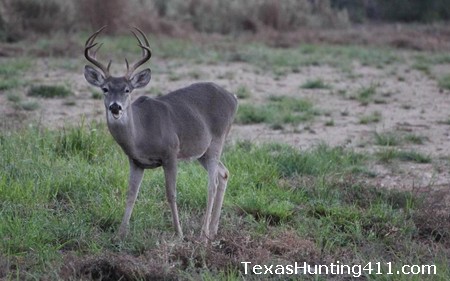Let’s face it, white-tailed deer hunters like to see deer when they go out hunting. However, they also understand that deer populations should be managed on an annual basis and that harvest through regulated hunting only helps the health of the remaining deer herd and habitat. Many hunters, especially those involved in deer management programs, are interested in determining the exact number of whitetail deer per acre their property can support. Although deer density is important, it’s not critical that the property be managed to contain the maximum number of animals.
Sure, it would be great to have a healthy herd of the maximum number of deer a property can support right now. The problem is, habitat condition and quality is constantly changing. It changes from season to season and from year to year. Deer density is important, but I’ll submit that it’s more important to have a lower density than a higher deer density. For example, let’s just say that a property can support 1 deer for every 10 acres under perfect conditions. That’s great, but how often is habitat in perfect condition? Holding a herd at 1 deer per 10 acres gives no wiggle room, but an estimated deer density of 1 per 12-15 acres means deer will have adequate forage even under less than perfect conditions.

This puts less stress on the deer manager to make the exact right call at the exact right time. It also means deer will be healthy and that habitat will improve. This means the deer found there can be even more selective when it comes to choosing the most desirable, high protein plants. Protein translates into body mass and antler growth. So although we live in a world of maximum everything, I think a less than maximum deer population is right on the money.
Source: “Not all whitetails in North America eat the same amount of food in a day. But strictly for purposes of illustration, let’s assume that an “average” deer, given as much as it would like to eat, consumes 7 pounds per day. In a year, that totals 2,555 pounds.
Let’s also assume that the natural habitat averages 11 percent protein on a year-round basis. (The general consensus among biologists is that whitetails need approximately 16 percent protein during the antler-growing/fawning period from early spring through summer. Eleven percent would be representative of quality native habitat such as is found in South Texas. A study in Alabama showed an annual average protein level of 7 percent in the natural habitat, which would be representative of much of the rest of the Southeast as well.)
Let’s assume that an acre of natural whitetail habitat can produce 200 pounds of deer feed per year, but that only half of that (100 pounds) can be eaten without damaging the habitat. (In the Southeast, average production of native deer forage is closer to 150 pounds per acre.)
Using an annual production of 100 usable pounds of deer browse per acre of natural habitat and an annual requirement of 2,555 pounds of feed per deer, we see that 25.6 acres are required to support one deer throughout the year.
But remember: This is about right for good natural habitat – habitat that has a high protein level. With an average protein level of only 11 percent in the herd’s diet, at a density of a deer per 25.6 acres body and antler sizes are going to be well under the herd’s genetic potential. In addition, many (indeed, most) whitetail populations are underfed, due to excessive foraging pressure on the available vegetation. Put all of this together, and it’s easy to see why we have so many stunted and stressed herds today.”